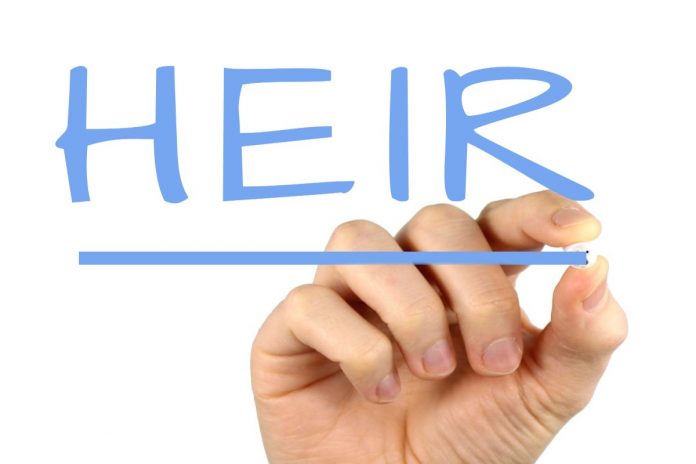This article has been written by Oishika Banerji of Amity Law School, Kolkata. This article deals with the application for a legal heir certificate in India.
This article has been published by Shoronya Banerjee.
Table of Contents
Introduction
In the event of a family member’s untimely death, a legal heir certificate must be acquired in order to transfer the deceased’s assets to his or her legal heirs. A legal heir certificate is a crucial document that establishes the deceased’s relation with his or her lawful heirs. After obtaining a death certificate from the municipality/corporation, the heirs can apply for this legal heir certificate to assert their claim to the deceased person’s property and debts. Typically, attorneys assist in the drafting and registration of a legal heir certificate. A legal heirship certificate is required to determine who the real legal heirs are, as well as any legal heirs who were left out of the division, etc. The area Taluk/Tehsildar, the corporation/municipality office of the corresponding area, and the district civil court can all provide legal heir certificates. This document lists all of the dead person’s lawful heirs and is only granted after a thorough investigation. This article provides the readers with the process of applying for a legal heir certificate in India.
Legal heir certificate
A legal heir certificate identifies the genuine heir, who can subsequently claim the deceased person’s assets and property. To place a claim on the dead person’s property, all qualified successors must have this certificate. The legal heir certificate only gives the bearer the right to claim insurance, as well as receive government dues such as provident fund, gratuity, and arrears. A person with a succession certificate can sell the deceased’s property. However, the same can be carried out after obtaining a written agreement and a NOC (No Objection Certificate) from all other legal heirs of the deceased.
The legal successor of a deceased person is obligated under the Income Tax Act of 1961 to submit the deceased’s income tax return on his behalf if the latter earned taxable income in the previous year. As a result, the legal successor of the deceased must register with the income tax department for this reason. The documents which are required for the registration of a legal heir in income tax are provided hereunder:
- Death certificate.
- PAN card of the deceased.
- Self-attested PAN card of the legal heir.
- Legal heir certificate.
- An affidavit in the presence of the Notary Public.
Purpose of a legal heir certificate
In general, while purchasing or registering property, the buyer should seek a legal heir certificate to verify the property’s ownership. There may be numerous legal heirs for an ancestral property, in which case it is necessary for all legal heirs to sign the deed of conveyance providing their permission to avoid any dispute. The following are the significant purposes of a legal heir certificate:
- For the purpose of distributing the decedent’s property and assets to his/her heirs.
- To file an insurance claim.
- To approve and handle the dead employee’s family pension.
- To obtain government benefits such as provident fund, gratuity, and so forth.
- To receive the deceased’s wage arrears as a state or federal government employee.
- To find work through compassionate appointments.
Who can apply for a legal heir certificate
The following persons are considered as the legal heirs according to Indian laws and can claim a legal heir certificate:
- Spouse of the deceased.
- Children of the deceased (son/ daughter). It is to be noted that married and unmarried daughters are now legal heirs and enjoy the same rights as sons since 2005 after the amendment of the Hindu Succession Act, 1956. As a result, married daughters are also the legal heirs of the deceased.
- Parents of the deceased.
The immediate legal heirs of a deceased individual are the parents, spouse, and children. When a person dies without having any direct legal heirs, the legal heirs are the deceased’s grandchildren. If there are no grandchildren, the legal heirs will be the dead person’s siblings and sisters, who will be able to receive the legal heir certificate.
If the second wife is officially married under the Hindu Marriage Act of 1955, she has deemed the deceased’s wife and the legal heir. When the first marriage is formally dissolved by a divorce decree or the first wife dies, the second wife becomes legally wedded. The children from the first wife, as well as the children from the second marriage, shall be regarded as legal heirs of the deceased.
Offspring born to a man and a woman who are not married or born out of wedlock are referred to as illegitimate children. Illegitimate offspring have all of the rights to the dead parent’s property and are thus considered as legal heirs.
Documents required for obtaining a legal heir certificate
The following list of documents is called for in order to obtain a legal heir certificate:
- Signed application form.
- Identity/Address proof of the applicant (voter’s ID, Aadhaar Card Driving License, Passport, or any other government-issued identity card).
- Death certificate of the deceased.
- Date of Birth proof of all legal heirs (birth certificate, school transfer/leaving certificate, PAN card, passport, etc.).
- A self-undertaking affidavit.
- Address proof of the deceased (Any legitimate identity evidence or telephone/mobile bill, gas bill, or bank passbook with the legal heir’s name and address can be used as proof of the legal heir’s address).
Difference between a legal heir certificate and a succession certificate
- A legal heir certificate is used to identify the living beneficiaries of a deceased person, whereas a succession certificate is used to establish the beneficiaries’ credibility and provide them the authority to acquire the deceased’s debts, assets, and other resources.
- A legal heir certificate is obtained through a Tehsildar or Taluk Office, whereas, a succession certificate can be obtained through a civil court and high court.
- The maximum time period for obtaining a legal heir certificate is 30 days, whereas, for a succession certificate, it is a period 7-8 months.
- The relevance of a legal heir certificate is to assist in locating living heirs and obtaining the appropriate pension or tax benefits. Whereas, the significance that a succession certificate holds lies in property transfer concerns. It also aids in the identification of rightful legal heirs.
- The fees required for issuing a legal heir certificate are a stamp duty of Rs. 2 and Rs. 20 on affidavit. Whereas, for a succession certificate, a certain percentage of the value of the property in question constitutes the fees that need to be paid.
The process involved in applying for a legal heir certificate in India
The area Taluk/Tehsildar, as well as the corporation/municipality office in the appropriate area and the district civil court, can provide legal heir certificates. This document lists all of the dead person’s legitimate heirs and is only released after a thorough lookout. In most cases, acquiring a legal heir certificate takes 30 days. If the certificate is not received in a timely manner or the responsible authorities do not reply, one should contact the Revenue Division Officer (RDO)/sub-collector. The process involved in obtaining a legal heir certificate have been summarised below:
- The dead person’s rightful heir must go to the proper official in their region and request a legal heir certificate application form. The applicant must complete the application and sign it before submitting it to the appropriate authorities. This application includes the names of all legal heirs, their link to the dead, and family members’ residences.
- The application should include all essential documentation, including the deceased person’s death certificate. A death certificate from the municipality/corporation office is required.
- Along with the application, an affidavit on stamp paper or a self declaration must be presented.
- An inspection is conducted and the investigation is completed by a revenue inspector/administrative officer.
- The authorised official issues the legal heir certificate once the investigation is concluded satisfactorily.
A detailed list of the procedure involved in applying for a legal heir certificate in India
- Approach the Taluk Office: The applicant must go to the office of the Tehsildar or Taluk. When he chooses to approach a lawyer from the District Civil Court, he has another alternative.
- Receive the application form: The applicant must acquire the application form from the Tehsildar official in charge.
- Enter the details: The candidate must next fill out the application form with all of the needed information.
- Attach the documents: After entering all of the information, the applicant must attach all of the required papers to the application form.
- Affixing stamp: The applicant must stamp the application form with a Rs. 2 stamp.
- Submit the application: After that, the applicant must submit the application form to the Tehsildar office’s approved officer.
- Verification process: The village administrative officer and revenue inspector then verify the application.
- Issuing the certificate: The certificate will be issued by the appropriate authorities when all of the verification steps have been completed, and it will list all of the deceased’s legitimate heirs. In most cases, obtaining a legal heir certificate takes 30 days, but if there is an unreasonable delay or the involved authorities refuse to reply, the applicant must contact the Revenue Division Officer (RDO) or the sub collector.
Online application for obtaining a legal heir certificate in India
An online application for a legal heir certificate is available. On the e-portal of the applicant’s relevant district, the applicant may fill out the form for obtaining a legal heir certificate and attach the needed papers. When submitting the form, the applicant must pay the costs online. When the certificate is available, it may be downloaded through the e-portal. It is to be noted that different states can have different sets of procedures for procuring a legal heir certificate, therefore, the standard steps which are involved in an online application for obtaining a legal heir certificate in India, have been laid down hereunder. To make it easier for the readers of this article, an online application form can be accessed here.
- Step 1: The applicant has to login to the e-district portal of his/her state.
- Step 2: The applicant needs to click on the “Apply Online” option which is visible on the homepage itself.
- Step 3: The login page will appear and the applicant needs to enter the registered mobile number.
- Step 4: The applicant thereafter needs to click on the “Proceed” button to enter into the district home page (it is to be noted that different states can have a separate name for this page)
- Step 5: The applicant needs to select the “New Request” option in the menu bar and click on the “Surviving Family Member.”
- Step 6: On the very next page, the application form will appear on the screen.
- Step 7: The above-mentioned form needs to be filled up by the applicant with the required details and the required scanned documents need to be uploaded.
- Step 8: The applicant thereafter needs to click on the “Save” button to submit the application successfully.
- Step 9: Further, the applicant has to click on “Online Payment” to pay the application fees.
- Step 10: After the successful payment, the applicant can download the certificate.
- Step 11: The applicant can click on the “Get Status” option from the menu if the certificate is not available.
- Step 12: The applicant can enter the acknowledgment number and click on the “Find” button to view the status of his/her application.
- Step 13: The applicant can click on the “Print” button which is often right next to the get status option.
- Step 14: The applicant thereafter has to enter the acknowledgment number and click the “Search” option.
- Step 15: The legal heir certificate will be visible to the applicant on the screen itself.
- Step 16: The applicant has to then click on the “Download Certificate” option to download the legal heir certificate.
This is how a legal heir certificate looks like;
Conclusion
As we come to the end of this article, it is worth stating that a legal heir certificate is a necessary document for obtaining the deceased’s retirement benefit claims, gratuity, and provident fund claims, as well as pension and insurance claims. It establishes the heir’s legitimacy and gives them the power to inherit the deceased’s possessions.
References
- https://www.moneylife.in/article/how-to-obtain-a-legal-heir-certificate/63045.html.
- https://www.india.gov.in/application-form-legal-heir-certificate.
- https://districts.ecourts.gov.in/sites/default/files/jcj%20rajamwrkshop1.pdf.
LawSikho has created a telegram group for exchanging legal knowledge, referrals, and various opportunities. You can click on this link and join:
Follow us on Instagram and subscribe to our YouTube channel for more amazing legal content.
 Serato DJ Crack 2025Serato DJ PRO Crack
Serato DJ Crack 2025Serato DJ PRO Crack











 Allow notifications
Allow notifications



